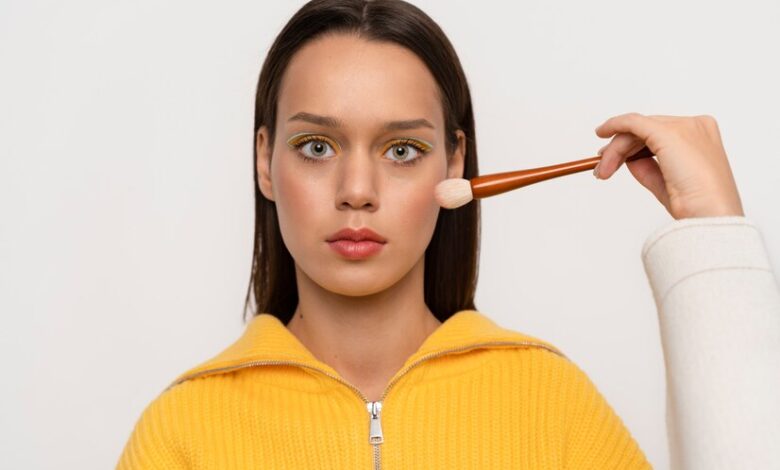How to Contour: Master Makeup Contouring in 6 Easy Steps

Face contouring is a method for sculpting and creating depth in your face that involves using makeup that is slightly darker or lighter than your natural skin tone. Contrary to our regular foundation and concealer, which we normally want to match our skin perfectly, contouring is all about creating the illusion of shadow and light on our faces.
Contouring Is Necessary, But For What?
A contouring kit isn’t necessary to do this: You may contour using two different hues of concealer or foundation, bronzer, highlighter, or even eyeshadow or brow powder! To avoid appearing cakey, make sure that all of your makeup products are of the same consistency and that you have the correct makeup brushes on hand.
Navigating the beauty business requires knowledge, expertise, and practical experience, regardless of whether you already know a blush brush from a bronzer brush.
A Step-by-Step Tutorial on How to Contour.
The amount and kind of contouring you get will vary from person to person and will be determined by your unique bone structure and facial features.
- Preparation for the face is essential
After cleansing your face and applying moisturising lotion, you may begin the application of your makeup. In the case of a more complex makeup job, a primer could be necessary. As an intermediary between your skin care products and your cosmetics, a primer improves the performance and longevity of both. Conceal any imperfections or discolouration by using foundation or concealer in tones that match your natural undertone and skin tone.
- Shadow
The simplest approach to contour is to use your darker colour to create a shadow under your cheekbones. Apply a little amount of product on your cheekbones by sucking them in and drawing it around your jawline and temple. There are three basic ways to apply a shadow to your face: down the sides of your nose, in a “3” shape that follows your hairline, beneath your cheekbones, and along your jawline, or in an upside-down triangle shape that frames your cheeks. To discover the style that best suits your face, experiment with various lines and shadows until you find what works best for you.
- Highlight
Your forehead, bridge of the nose, tip of the nose, the top of your cheekbones, your cupid’s bow, and around the eyes and brow bone are all places that naturally reflect light. A shimmering (not dazzling!) highlighter, iluminator, or eyeshadow should be used instead of a concealer that’s a shade lighter than your natural skin tone.
- Blush
Applying blush on the apples of your cheeks isn’t required for a contoured look, but it may help your makeup seem more natural by serving as a bridge between your shadow and highlight areas.
- Blend
Blending is critical since you’re dealing with colours that don’t match your skin tone. Blend your shadows and highlights into your skin or foundation layer using a large, fluffy brush, blending brush, or makeup sponge until the lines you made seem more natural. Make sure to add setting powder or spray to get a perfect finish.



